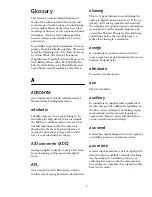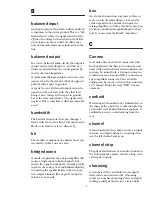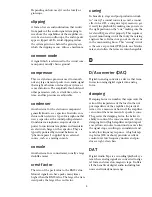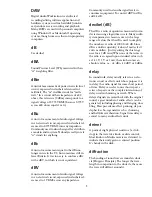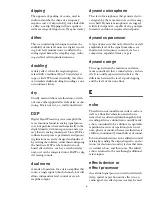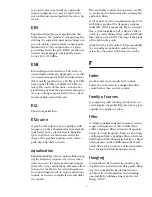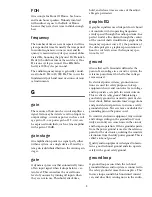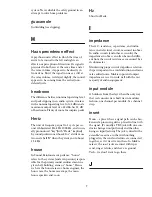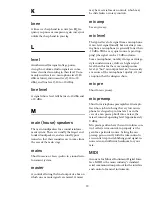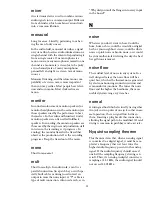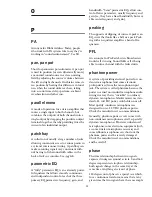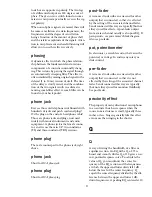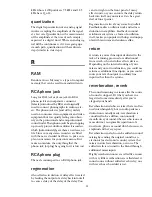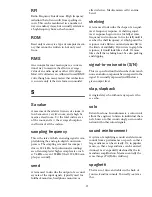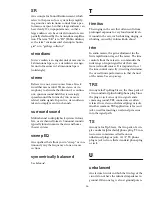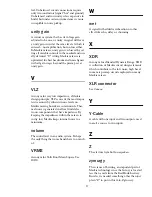
4
Depending on how used, it can be lovely or
grotesque.
clipping
A form of severe audio distortion that results
from peaks of the audio signal attempting to
rise above the capabilities of the amplifier cir-
cuit. Seen on an oscilloscope, the audio peaks
appear clipped off. To avoid clipping, reduce
the system gain in or before the gain stage in
which the clipping occurs. Also see headroom.
common mode
A signal which is referenced to the circuit com-
mon point, usually chassis ground.
compressor
This is a dynamics processor used to smooth
out any large transient peaks in an audio signal
that might otherwise overload your system or
cause distortion. The amplitude threshold and
other parameters such as attack time, release
time, and tire pressure are adjustable.
condenser
Another term for the electronic component
generally known as a capacitor. In audio, con-
denser often refers to a type of microphone that
uses a capacitor as the sound pickup element.
Condenser microphones require electrical
power to run internal amplifiers and maintain
an electrical charge on the capacitor. They are
typically powered by internal batteries or
“phantom power” supplied by an external
source, such as a mixing console.
console
Another term for a sound mixer, usually a large
desk-like mixer.
crest factor
The ratio of the peak value to the RMS value.
Musical signals can have peaks many times
higher than the RMS value. The larger the tran-
sient peaks, the larger the crest factor.
cueing
In broadcast, stage and post-production work,
to “cue up” a sound source (a record, a sound
effect on a CD, a song on a tape) means to get
it ready for playback by making sure you are in
the right position on the “cue,” making sure the
level and EQ are all set properly. This requires a
special monitoring circuit that only the mixing
engineer hears. It does not go out on the air or
to the main mixing buses. This “cueing” circuit
is the same as pre-fader (PFL) solo on a Mackie
mixer, and often the terms are interchangeable.
D
D/A converter (DAC)
Digital-to-analog converter, a device that trans-
forms incoming digital signals into analog
form.
damping
Damping factor is a number that represents the
ratio of the impedance of the load to the out-
put impedance of the amplifier. In practical
terms, it is a measure of how well the amplifier
can control the movement of a speaker's cone.
The greater the damping factor, the better its
ability to control the cone's movement. A low
damping factor (high amplifier output imped-
ance) allows a woofer to continue to move after
the signal stops, resulting in an indistinct and
mushy low frequency response. A high damp-
ing factor (200 or above) provides excellent
control over low frequency woofers and pro-
duces a tight, clean bass.
DAT
Digital Audio Tape is a recording/playback sys-
tem where analog signals are converted to digi-
tal form and stored on magnetic tape. It offers
all the benefits of digital audio including low
noise and wide dynamic range.


